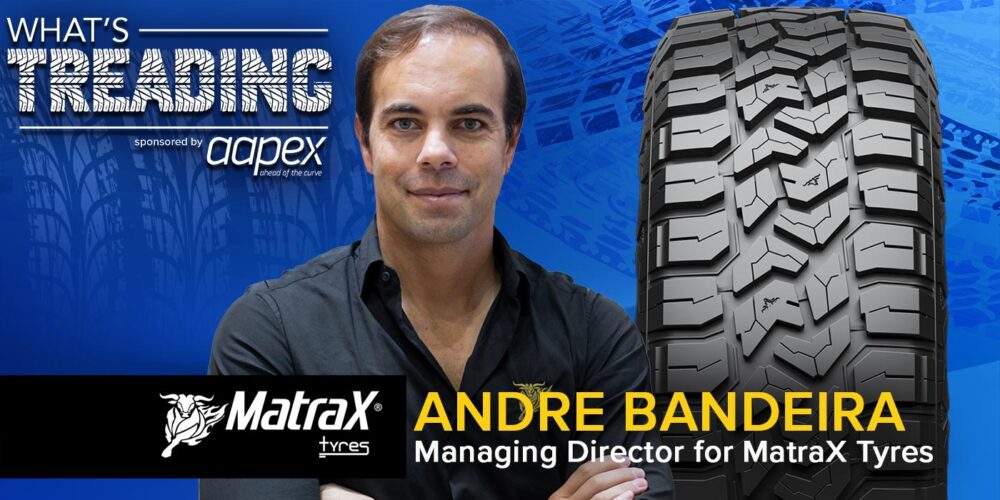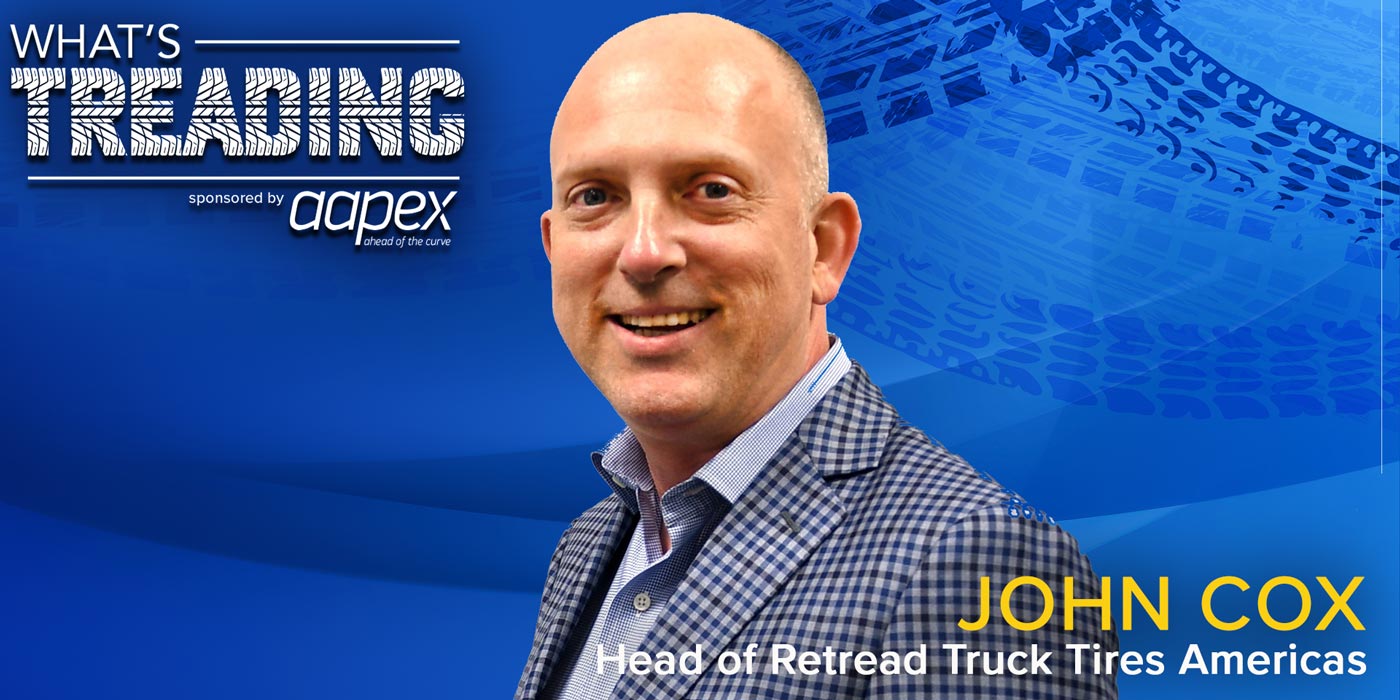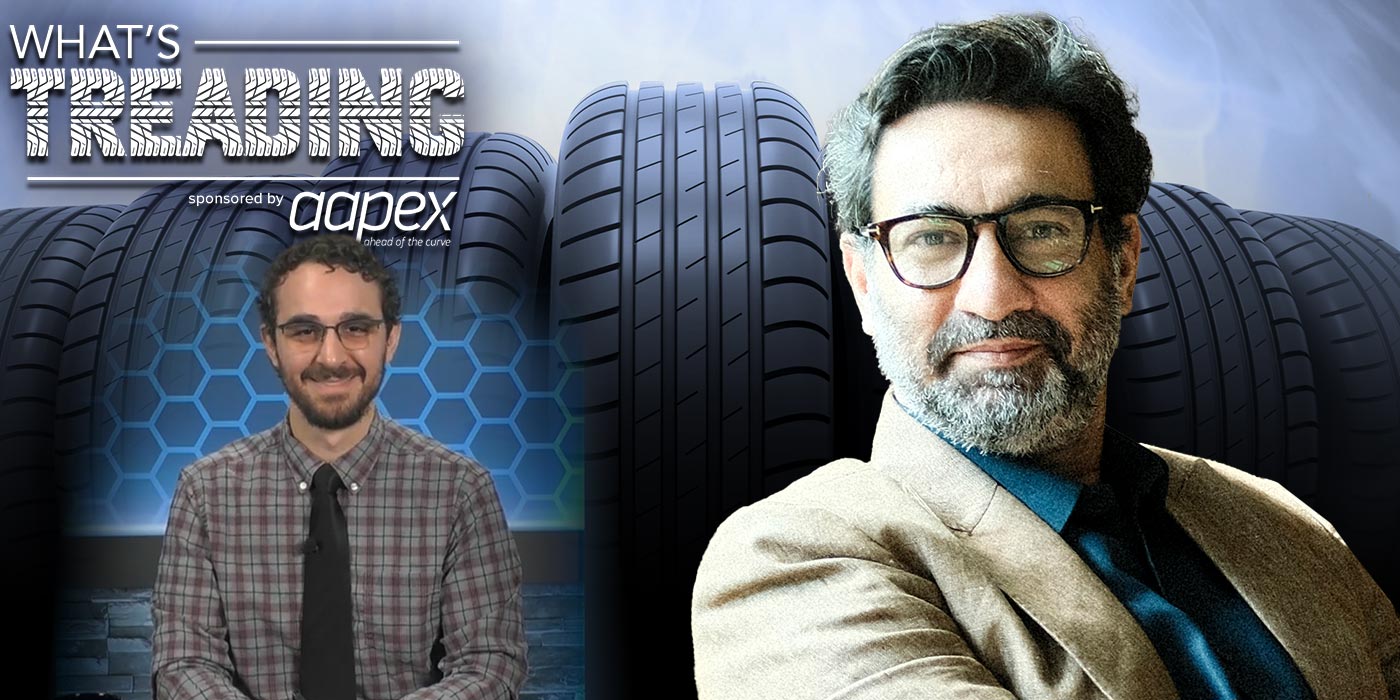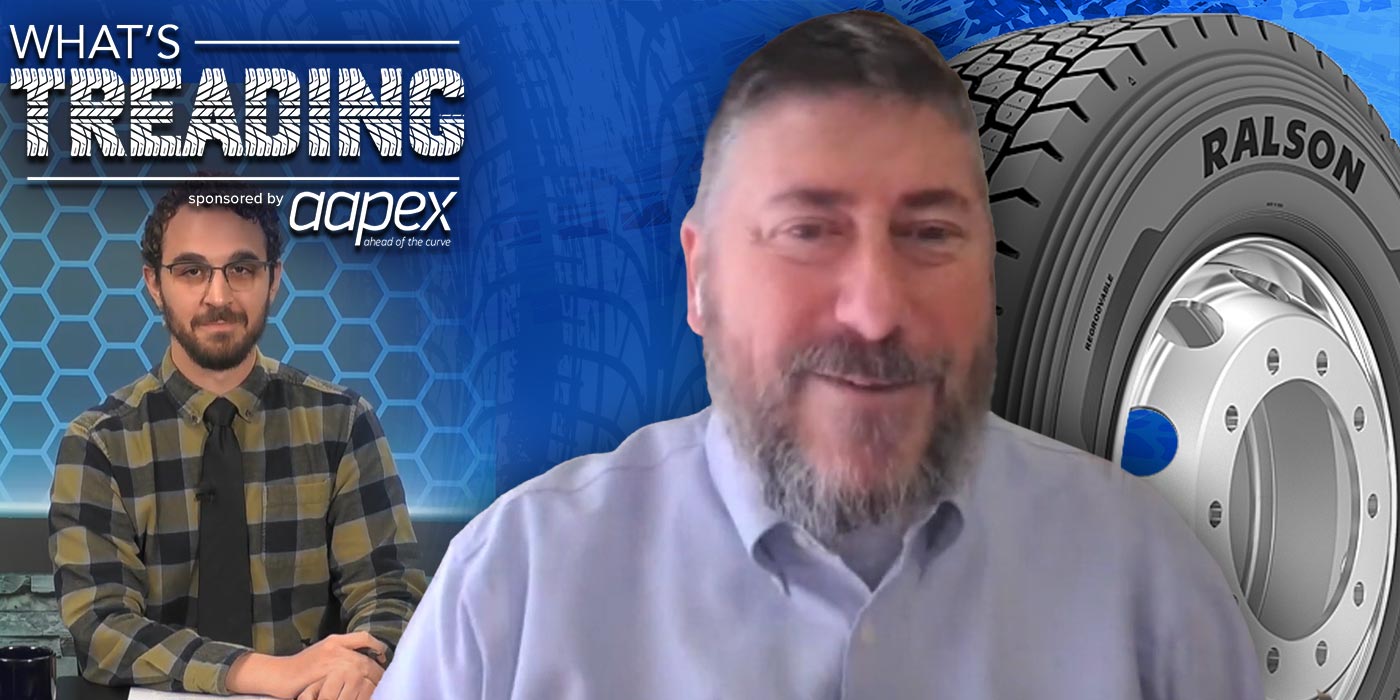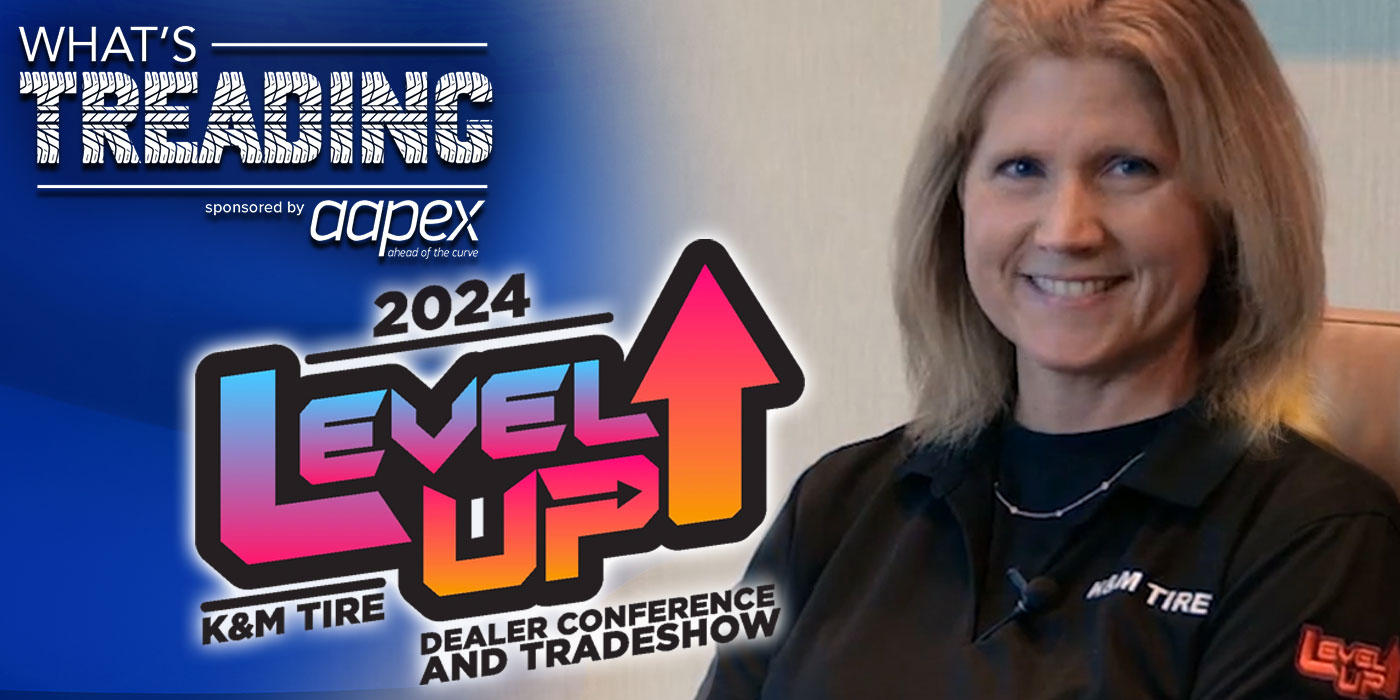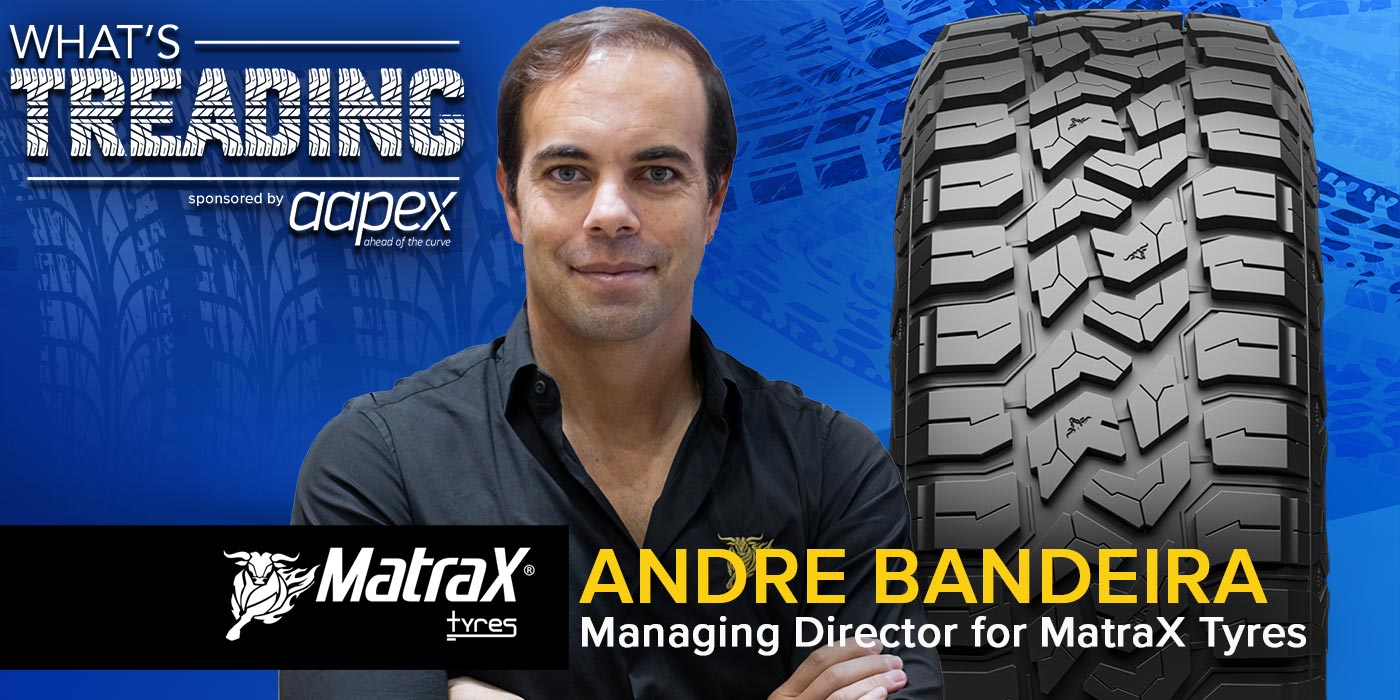Over the last few years, Wegmann Automotive has found diversification to be a huge boon for business, whether that comes from various wheel weights options or the acquisition of Alligator TPMS in 2019.
“I think everybody’s always looking for ways to grow their organizations. We have a very large amount of business in the wheel weight space,” says Greg Parker, the national account sales and marketing director for Wegmann Automotive. “In order for us to continue to grow, we need to get outside of that and grow into new product areas. We’re excited about this. I mean, obviously, valves are a critical component of wheels and tires. The more that we can put in that box or put on that pallet to ship to our customers, the better it is for them and the better it is for us.”
In this episode of What’s Treading with Tire Review, Parker discusses the shift from lead wheel balance weights to non-lead alternatives, such as steel and zinc, due to environmental regulations, as well as how Wegmann Automotive is adapting to these changes and investing in non-lead products like plasteel. Parker also delves into how the addition of Alligator’s TPMS business has enhanced Wegmann Automotive’s business in North America, enabling the company to diversify its product offerings.
Want more What’s Treading? Click here.
Here’s a transcript of the show:
Madeleine Winer: Welcome to What’s Treading with Tire Review, presented by AAPEX. I’m Maddie Winer, and on the podcast today I’m joined by Greg Parker, National Account Sales and Marketing Director for Wegmann Automotive. Greg, thanks so much for joining me today. I really appreciate your time.
Greg Parker: Thank you for the opportunity to be on. I really appreciate it.
Madeleine Winer: I’m curious, Greg, your title is National Account Sales and Marketing Director. Just so we’re all on the same page, can you go over what that entails and what all you oversee at Wegmann Automotive?
Greg Parker: Yeah. Wegmann Automotive is a large automotive parts manufacturer. We manufacture primarily wheel balance weights. We’re a global company. We’re German owned. We have factories all over the world. My role at Wegmann for the last 12 years has been the National Account Sales and Marketing Director. I also oversee product management. We have a team of product managers that manage product lifecycle, this sort of thing, new product roll-outs, new product invention.
And then on the marketing side, we work with outside agencies, work with our nice people in industry like Tire Review to help us publicize our company and our products. And then on the sales side, I manage some of our larger accounts with big national retailers.
Madeleine Winer: Very cool. Very interesting. You kind of have your hands in a little bit of everything or different parts of the company. Very cool, very cool. Well, some of those brands, I know you guys cover wheel weights, TPMS with Hofmann Power Weight, Hofmann Power Solutions. You guys acquired Alligator TPMS I believe that was in 2019, correct me if I’m wrong on that.
Greg Parker: Yeah. We have a lot of brands. We consider ourselves kind of a house of brands, if you want to say that. Hofmann Power Weight, Perfect Equipment, Plombco would be three North American brands. We have others in Europe. We have brands called Remog and Tracks and others. Even in Asia we have different brands.
But in North America, those would be the three main wheel weight brands that the market knows. And then we had an acquisition in 2019 right before COVID where we acquired Alligator, which was our first jump into non-wheel balance weight products. Alligator primarily makes valves and TPMS systems.
Madeleine Winer: Right, yeah, yeah. I’m curious, it’s been been a couple years, how has the addition of Alligator’s TPMS business enhanced Wegmann Automotive’s business in North America?
Greg Parker: Yeah, it’s been great. I think that it’s a jump into a different product segment, product silo for us outside of wheel balance weights. I mean, we’ve been in the wheel balance game since the beginning of the invention of the product in the 1930s. For 85 years, we were primarily just wheel weights. And then we in 2019 jumped into air control. It is a new product segment for us, but Alligator itself and a lot of the expertise from engineering and manufacturing and all of that came with the opportunity to buy the company.
We maintain a lot of that expertise, even though it’s new to the Wegmann Automotive family of brands. Alligator’s a 100-year-old brand. It started in 1920. It’s one of the oldest air control brands in the world with a lot of history, a lot of expertise that we’re real proud to be a part of our group.
Madeleine Winer: Very cool. Very cool. It seems like it’s been an opportunity for diversification for Wegmann Automotive. Would you say that’s the case?
Greg Parker: Yeah, I think the opportunity for us to or what initially drew us to the opportunity, I should say, is the opportunity to grow the basket of goods that we sell and ship to our customers, right?
Madeleine Winer: Right.
Greg Parker: I think everybody’s always looking for ways to grow their organizations. We have a very large amount of business in the wheel weight space. In order for us to continue to grow, we need to get outside of that and grow into new product areas. We’re excited about this. I mean, obviously valves are a critical component to wheels and tires. The more that we can put in that box or put on that pallet to ship to our customers, the better it is for them and the better it is for us.
TPMS is an exciting adventure. Obviously there’s a lot of players in the marketplace that sell those products. It’s exciting for us to get in there and figure it out and understand what it takes to win the business and make the customers happy.
Madeleine Winer: Yeah, for sure, for sure. TPMS is always a evolving part of the market. It’s interesting to see what new technologies are coming out there and sensor technologies. I’m sure we’ll see some of that from you guys as well.
Greg Parker: I think that sensors are certainly not going away in vehicles. There’s more sensors coming for ADAS, for lane departure, adaptive cruise control. I mean, all of these things are sensor driven. They’re certainly not going to be less chips in cars in the future. There’s going to be more chips. I think TPMS is certainly following suit with new functionalities. It’s not about just turning on or off the light on the dash anymore.
There’s new technologies that are coming with auto location and many other things with TPMS, but it’s certainly growing and getting smarter. And from a manufacturing standpoint, that makes it more difficult. You have to stay with the times, stay up to date with what the OEMs are doing, and then follow suit with your aftermarket opportunities.
Madeleine Winer: Yeah, for sure, for sure. No, definitely interesting. Greg, I wanted to touch on something you mentioned before, which is I would believe the largest part, I believe you said that, of Wegmann Automotive’s business wheel weights. In what ways has Wegmann Automotive changed its wheel weight product lines to adapt to EPA safety measures concerning some wheel wheel weight materials? I know that’s been a huge topic over the last decade, at least from when I’ve been in the industry.
Greg Parker: Going back to, as I mentioned earlier, from the 1930s, one of the original patents for clip-on wheel weights was essentially a lead clip-on wheel weight, right? For 75 years, what the market used. When we go back to roughly around 2005 ish timeframe, that’s when you started to see the State of California want to move away from lead. You started to see OEMs move away from lead.
Today, we see there are nine states that have laws against lead, and we just within the last I would say several months, the country of Canada announced that they are also banning lead wheel weights, which will go into effect at very early 2024. It’s not something that’s stopping. It’s continuing with this state by state or bordering country, however you want to define it, single municipalities that are banning lead wheel weights. When we look at it from a vehicle count in USA, it’s roughly about 40% of the vehicles in the United States are in an area that are mandated away.
I shouldn’t even say USA, I should say North America about 40%. When you factor in all the OEMs that are non-lead, all the major end users that are non-lead, it’s a pretty large percentage of the market is already non-lead. For us as an organization, we try to boost our capacities in the non-lead space. We have products like plasteel. I actually have one sitting right here, which is a steel and plastic product that reacts like lead, similar to lead from an installation and removal standpoint.
For us, we’re trying to boost capacities and be ready, for example, like with Canada where we’re already ready to be able to supplant the lead that was going into the market up there with non-lead products. I would say that our stance is we’re ready when the market’s ready kind of thing.
Madeleine Winer: Got it.
Greg Parker: When the market is ready to shift, we’re ready to shift.
Madeleine Winer: You guys are, correct me if I’m wrong, still manufacturing lead weights, probably like you said, not in the capacity that you used to, but replacing lead is steel from what I know. Any other materials to be on the lookout for as this sector of the industry continues to change?
Greg Parker: Yeah. The two main materials that are primarily used to replace lead are steel and zinc. We see that zinc is used primarily in Europe. It’s the number one replacement material. It’s used by very large OEMs in North America, like Chrysler. And then steel would be the other alternative. They’re both equal opportunity alternatives, I guess I should to say. Steel is a little bit different. It’s a little bit harder to install, a little bit harder to remove, can sometime scratch wheels a little easier and those sorts of things, but it’s typically the lower price point.
And then zinc would be the product that’s kind of more like lead. It is a malleable material and has that fit and function of what customers are used to from lead, but it’s typically a little bit more of an expensive raw material. It depends on what you’re looking for from a customer standpoint on which type of product you may go with.
Madeleine Winer: Yeah, no, that makes perfect sense. The other aspect that I wanted to discuss with you was the clip-on versus adhesive wheel weight sales from a Wegmann Automotive perspective. You held up the plasteel clip-on wheel weight, I believe. I’m curious to know what you’re seeing in terms of what applications both are popular and what’s the ratio between clip-on and adhesive that you guys have in your business right now in terms of sales?
Greg Parker: The same conversation from a minute ago. If we go back a decade ago, clip-on was probably 70% of the market and adhesive probably 30% of the market. Now, fast-forward to today, it’s probably around that 50/50 mark. The reason you have both options is for clip-on wheel weights are the traditional way from the past with your traditional steel wheels. You just clip it on and go. Adhesives came into the marketplace around the time of the addition of alloy wheels where there were regulations trying to lessen the weight of vehicles.
OEMs started to move towards a way where you could get rid of the flange on the wheel to lessen the weight of the wheel and put the adhesive weight on the inner area of the wheel. It also allows for automation. At large OEMs, they have robots that can basically do the installation of the adhesive wheel weights. Again, it allows them to eliminate the clip-on wheel weight. In the aftermarket settings, clip-ons are much faster. When time is of the essence, you want to get the cars in and out and 15 minutes or less.
A clip-on weight, basically as long as you select the right one, you grab it, you hammer it on, it takes five seconds or less. With an adhesive wheel weight, you have to clean the wheel, peel the backing, rip the segments. It’s certainly a little bit of a longer process. Although it is a little bit more of a universal application, it’s slower. Again, you can pick and choose which fits the application that you’re looking for. In the future, we could see that potentially clip-ons will continue to lessen because OEMs are moving more and more towards automation.
This will continue to grow, but I still think we’re pretty long ways away. I don’t think clip-ons are going away anytime real soon, but maybe in the next 10 or 20 years we could see it.
Madeleine Winer: Got it, got it. I know adhesive wheel weights are very popular for performance wheels and things like that to hide the wheel weight from the exterior of the wheel assembly. I’m curious to see how those are integrated into the market more, clip-on wheel weights, and how they’ll evolve as well.
Greg Parker: I’ll say that in our OEM divisions, we manufacture and sell automation equipment, which is pretty amazing actually. Wheel weight automation, if you’ve never kind of seen something like that, I would encourage you to maybe just YouTube it. I’m sure there’s videos out there of wheel weights automations at OEM factories. It’s pretty impressive to see how that works. It certainly speeds it up for the OEMs and allows for that. I think that adhesives are going to continue to grow in use and adaptability and eventually one day take over the market.
Madeleine Winer: Yeah, that’s interesting. Very, very interesting. Well, Greg, I wanted to transition back to the topic of TPMS. For us at Tire Review, TPMS is one of our most-read topics online. I’m curious to get your take on this. Universal sensors have made TPMS service a bit easier for dealers, but what is the number one TPMS issue you hear from shops and how is Wegmann Automotive addressing that?
Greg Parker: I think that obviously the biggest issue I would say that most shops are concerned about with any kind of tire supply is price, right? We have certainly seen a challenge in TPMS pricing in the marketplace over the last year or two as the product changes. I think a lot of that is due to TPMS is now easier to understand than maybe it was years ago. It’s a very confusing product when it was first introduced to the marketplace, and now it’s becoming a little bit more commonplace. Technicians and business owners are a little less scared of it than maybe they used to be for sure.
But, I will say that the number one thing that we hear a lot about is coverage. How many TPMS firmwares or how many vehicles will a particular sensor cover? Coverage is a game to a degree by all of the TPMS suppliers. Everybody throws out different percentiles that you hear, and a lot of these percentiles come from very different ways. They determine these percentiles of coverage. But at the end of the day, you want a universal sensor at least that covers as many vehicles as possible.
Because if you have a vehicle coming to the shop that your sensor doesn’t cover, then that poses a problem. How do you get the correct sensor? Do I have to call a local parts store to get an OE direct fit? The customer has to wait for that or come back the next day. Those are situations where you may make the customer unhappy or lose the customer. You really want a product that covers as many vehicles as possible. I would urge people to really dive into those questions of, what does it mean? What does this percentage of coverage actually mean in terms of vehicles?
Madeleine Winer: Yeah, no. That is such a good point, because you’re right, you do hear like, oh, it covers 86% of vehicles on the market today. But what does that mean? From a dealer perspective, what vehicles are you servicing that could not be in that coverage area? That’s a really, really good point.
Greg Parker: In some cases, depending, again, if you’re using VIO data or make model listing data, a single percentile could be upwards of a hundred vehicles. The difference between 95 and 99 could be huge. I think that we typically lean on our elementary school educations that if it’s above 92, it’s an A, so it must be pretty good, right? But those couple of percentiles sometimes can be a big difference in terms of vehicle counts that come into an actual shop. Again, I think it’s important to really understand what a supplier is saying when they tell you these coverage numbers.
Madeleine Winer: Yeah, no, that’s a great piece of advice. You’re saying the biggest challenge for Wegmann Automotive in the TPMS space would you say is coverage or does it extend to other areas as well?
Greg Parker: Yeah, I think that for us, the coverage is not a challenge because we put a lot of emphasis on it. We had testing done in the USA. Everything is developed in the USA. We manage it all in house, if you will, in country. We really pride ourselves on having very high coverage numbers. But I do think there’s a lot of players in the marketplace. I think there’s no secret to that. There are players in the marketplace who don’t have as high of coverage. Maybe they have other features and benefits and they’re not concerned about coverage. But for us, that’s where we’ll hang our hat.
Another thing that we think is important is the actual valve. A lot of TPMS players in the marketplace are not valve manufacturers. They may be electronics companies or other things who really just buy some import valve to put on the actual sensor head, but the valve is extremely important. It’s the part that’s actually touching the rim. It’s the part that’s actually installed. It needs to be a high quality product as well. We’re an OEM valve manufacturer. Have been for 100 years. I think it’s important to have the best of both worlds, a high-quality valve, a high-quality electronics.
And then when we talk about the electronics, you’re talking about the hardware and the software part of the product. You’d want to have high-end componentry for the hardware. And then from the software side, which is the coverage and firmwares and all that, you want to have a high-end investment in those areas so that you’re maintaining it as what best is possible, because the software side of it can slip away very quickly if you don’t stay on top of it.
Madeleine Winer: Updating TPMS tools is a huge topic for shops that we’ve talked with various TPMS manufacturers about. That’s definitely important to stay on top of coverage as well.
Greg Parker: Yeah, exactly. I think another challenge for the industry with TPMS, our tools, I think, again, if we went back five years ago, there was a big need for tools in the marketplace. Nowadays, there’s not as big a need. There’s a lot of tools in the marketplace. A lot of players have put a lot of tools into the marketplace. And now you’re in a situation where shops in some cases have two, three, four tools sitting around. They have tools they don’t even need. I think that with the emergence of auto location in TPMS, this changes the game, so to speak.
I mean, 70% of the cars in the marketplace today don’t even need an OBD2-capable tool. I mean, they basically have auto location. The requirement for tools in the marketplace is getting less. The importance of the tool is getting less. I would say the emphasis is more on the high quality of the sensor and less about the high quality of the tool itself, because you’re required to use the tool as much.
Madeleine Winer: Yeah, yeah, no, that’s interesting too. Sensors are, I mean gosh, changing so rapidly. We talked about universal sensors, but there’s TMS out in the market and stuff like that. Lots going on, that’s for sure. But Greg, I wanted to switch gears really quick to talk about some supply chain stuff. COVID pretty much destroyed people’s perceptions about the supply chain, if you will.
Greg Parker: Yes, it did.
Madeleine Winer: Today we have sort of an inflationary environment, and I think a lot of companies we talk to are still trying to find their footing in what does a post-COVID supply chain world look like, if you can even call it post-COVID. Can you describe Wegmann Automotive’s outlook for this year? And in general, how do you feel the tire market will fare the rest of this year after a slow first half of 2023?
Greg Parker: I think that going into 2020 and coming out of 2020, I think that no one could have expected the log jam of logistics that we had for a year or more, and then the log jam of inflation that I think has slowed, but is still there. We’re still seeing inflation. I think in materials we’re seeing premiums remain at all time highs. Even though you may see indexes going down, an index doesn’t necessarily always govern the final price, if you will. Similar to buying a brand new car, you have dealer markups and these types of things.
I think materials are continuing to stay at these elevated levels, although it’s hidden how they’re staying at these elevated levels. I think that for our business, we use a couple of metrics. We track fuel consumption on a weekly basis. This is numbers that are readily available by government, and then miles driven. Between those two, you can triangulate to a degree as best you can a lag measure for how many miles are being driven out there and what’s it look like for tires.
There was a short amount of time back in 2022 coming out of ’20 and ’21 where we saw miles driven in fuel consumption pop back up to those 2019 levels. I think people were tired of sitting at home and they wanted to go on vacation and they wanted to get out there. It only was sustained for about six or eight months and we’ve fallen down again. I think that that’s attributed to more people working at home, just a lot of variable factors in where we’re not back to those metrics of 2019. We’re seeing it fall about five to 10% right now relative to those 2018, 2019 numbers.
I think that that is an indicator of where the market’s at. I think that tires will remain down, just my personal opinion. I don’t see it climbing for the rest of the year. Unfortunately, we are heading into an election year in the United States, and who knows what that will bring. Historically, election years bring a lot of turmoil in the markets, and so we’ll really see what happens with the market over the next 18 months.
Madeleine Winer: Yeah, for sure. Lots of changes going on. Lots of things happening not only in the tire industry, but just in the economy in general. Lots to keep our eyes on for sure.
Greg Parker: That’s correct.
Madeleine Winer: Well, Greg, I have so enjoyed our conversation. I could pick your brain about tire service, wheel weights, TPMS for forever, but we’ll save that for SEMA when we see each other at SEMA. But just want to say…
Greg Parker: I’ll leave it with one final. As you know, I’m a SEMA volunteer and have been for 20 years. I’m very passionate about SEMA volunteerism to help promote our industry, if you will. Not necessarily just in SEMA. There’s other great organizations, TIA and others, but it’s been interesting to see our beloved tire hall and the changes it’s had over the last years. The Wheel and Tire Council is another passion of mine and something I encourage everybody out there who’s involved in the industry to get involved with. It’s a great organization.
Madeleine Winer: No, yes, definitely a good note to end on. I would echo those sentiments. Can’t wait to see you at SEMA this year. Greg, thanks so much for being on the podcast today. We really appreciate your time.
Greg Parker: Yeah, thank you so much for having me.





